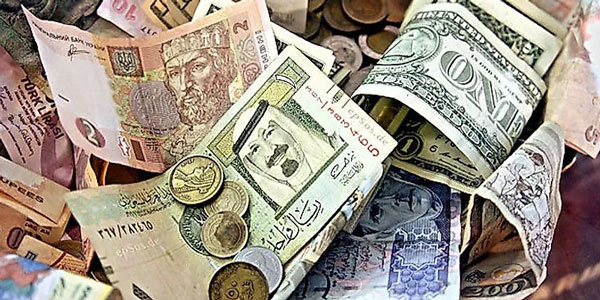
Unveiling Stealthy Strategies: How Credit Card Thieves Can Pilfer Your Information
Dec 01, 2023 By Triston Martin
In the modern digital era, credit card transactions have seamlessly woven themselves into the fabric of our daily routines. They undeniably offer convenience, yet their presence also opens doors for opportunistic individuals to exploit vulnerabilities, potentially compromising your valuable credit card information.
It is of paramount importance to grasp the nuances of these lurking threats and proactively shield your financial data. This article embarks on an insightful journey, delving deep into five covert techniques employed by cunning thieves to abscond with your credit card details, all while equipping you with the knowledge to fortify your credit card security.
Ways a Thief Can Steal Your Credit Card Information
Let's dive into the various ways a thief can steal your credit card information.
1. Phishing Attacks
Phishing attacks rank among the prevalent techniques employed by criminals to acquire credit card information. Typically, these schemes entail sending deceptive emails or messages, seemingly originating from trusted entities like banks or online retailers, with the aim of tricking recipients into revealing their credit card information or other sensitive data.

Thieves often use enticing subject lines and urgent language to create a sense of urgency. They may claim that there's been suspicious activity on your account or that you need to update your information immediately. To protect yourself, follow these tips:
Verify the sender: Check the sender's email address carefully. Legitimate organizations use official domain names, not suspicious-looking ones.
Don't click on links: Instead of clicking on links in the email, open your web browser and visit the official website directly.
Double-check: When uncertain, reach out to the organization using their provided official contact details to verify the email's authenticity.
2. Card Skimming
Card skimming is a crafty technique employed by criminals who discreetly deploy inconspicuous devices known as skimmers on card-reading machines, including ATMs, gas pumps, and even point-of-sale terminals in retail stores. These nefarious gadgets surreptitiously capture the data stored on your card's magnetic stripe as you initiate a transaction.
To safeguard yourself from falling victim to card skimming:
Examine card readers: Always scrutinize card readers before conducting transactions, whether at an ATM or a point-of-sale terminal. Look for any irregular attachments or loose components that might indicate tampering.
Guard your PIN: Shield your Personal Identification Number (PIN) from prying eyes by using your hand or body to conceal the keypad as you enter it. This simple act can thwart PIN theft.
Opt for chip cards: Whenever feasible, opt for using chip-enabled cards instead of swiping the magnetic stripe. Chip cards provide an extra layer of security against skimming attempts.
3. Data Breaches
Data breaches pose a significant threat when cybercriminals gain illicit entry into a company's database, pilfering valuable customer information, including sensitive credit card details. These breaches are indiscriminate, impacting large corporations, retailers, and even smaller enterprises entrusted with handling confidential data.
To fortify the security of your credit card information amid the potential fallout of a data breach, consider these proactive measures:
Monitor Your Accounts: Maintaining a vigilant eye on your credit card statements and bank accounts is paramount. Regular scrutiny can help you detect any unusual or suspicious activities promptly.

Set Up Alerts: Many financial institutions provide the option to set up account alerts. These real-time notifications can serve as an early warning system, alerting you swiftly to any aberrant transactions.
Consider Credit Freezing: An effective defensive tactic is to impose a freeze on your credit reports. This step hinders unauthorized access and the opening of new accounts, offering an added layer of protection against potential breaches.
4. Public Wi-Fi Vulnerabilities
Public Wi-Fi networks, commonly found in places like coffee shops, airports, and hotels, offer a convenient way to stay connected on the go. However, they also serve as enticing hunting grounds for cybercriminals seeking to intercept data, including your valuable credit card information.
To safeguard your online activities while using public Wi-Fi, consider the following precautions:
Utilize a VPN (Virtual Private Network): Employing a VPN encrypts your internet connection, significantly raising the difficulty level for hackers attempting to intercept your data.
Avoid sensitive transactions: It's wise to refrain from engaging in sensitive online tasks, such as online banking or shopping, while connected to public Wi-Fi networks.
Forget the network: After your session on public Wi-Fi, ensure that you remove or "forget" the network from your device. This precaution prevents automatic connections in the future, enhancing your overall online security.
5. Malware and Spyware
Malware and spyware are insidious forms of malicious software that infiltrate your computer or mobile device, silently logging your keystrokes and surreptitiously transmitting your credit card details to hackers without your awareness. Shielding yourself from these digital threats involves several proactive measures:
Install Reputable Security Software: Equip your devices with reliable antivirus and anti-malware software. Regular scans and real-time protection can act as a robust defense against malware and spyware.
Keep Software Up to Date: To maintain a strong defense, make sure your operating system, web browsers, and security software are consistently updated with the latest patches and security enhancements.
Exercise Caution: Avoid downloading files or clicking on links from untrusted sources, especially within emails or on dubious websites. Practicing discretion online can be your first line of defense against these stealthy threats.
Conclusion
In today's digital age, protecting your credit card information is absolutely crucial. As cybercriminals continually invent fresh methods to steal sensitive data, it's imperative to stay vigilant and put into action the strategies we've covered in this article. By doing so, you can substantially diminish the likelihood of becoming a victim of credit card fraud.
Embrace these measures wholeheartedly to ensure the safety of your financial information, shielding it from the prying eyes of those who seek to exploit it. Your proactive approach can be your strongest defense against modern-day threats to your credit card security.
-
 Investment Nov 20, 2023
Investment Nov 20, 2023All About Certified Fund Specialist (CFS)
A mutual fund specialist is a financial practitioner who has passed a certification exam. A qualification from the Institute of Business and Finance is required to become a certified fund specialist (IBF). Professionals in the financial sector who are certified fund specialists include accountants and bankers, brokers; money managers; personal financial counsellors; and other specialists.
-
 Investment Nov 14, 2023
Investment Nov 14, 2023All Things You Need to Know About Advance Settlement Funding
You can learn what is advance settlement funding and how does advance settlement work. Besides, the advance settlement funding may depend on several factors.
-
 Investment Dec 07, 2023
Investment Dec 07, 2023Effects on the Markets of Budget Shortfalls and Surpluses
Reduced income the next year is one possible outcome of a budget deficit due to increased borrowing, greater interest payments, and a lack of reinvestment. A surplus in the budget is the polar opposite of a deficit.
-
 Know-how Nov 23, 2023
Know-how Nov 23, 2023Guide to 'Buy Now, Pay Later' Apps: Which One's Right for You?
Buy now, pay later (BNPL) applications are popular for financing clothing, presents, and home furnishings. Discover the best 6 apps to use the BNPL method.